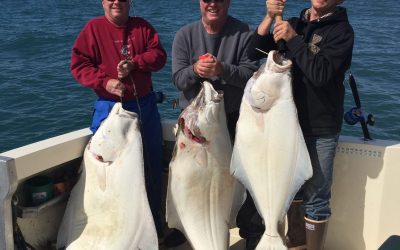Halibut
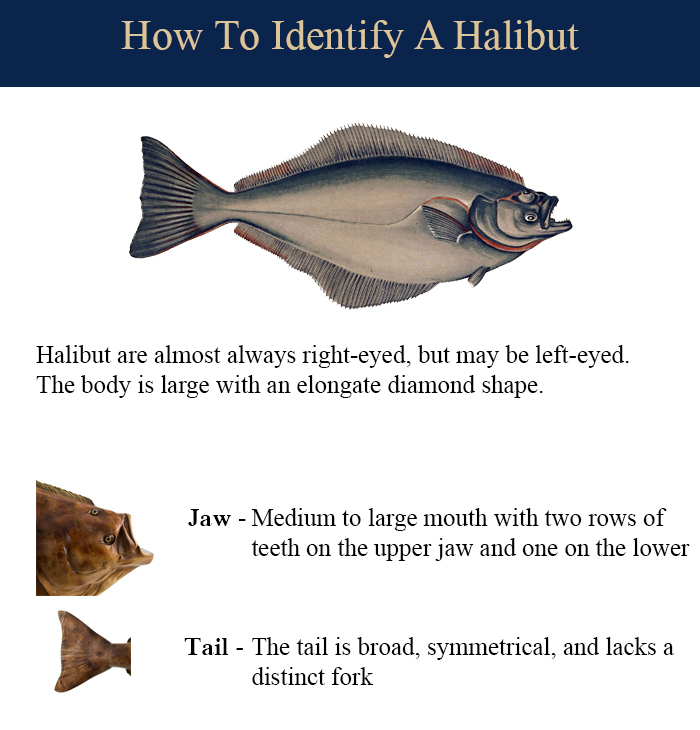
Answer: A 6 foot halibut weighs about 196 pounds
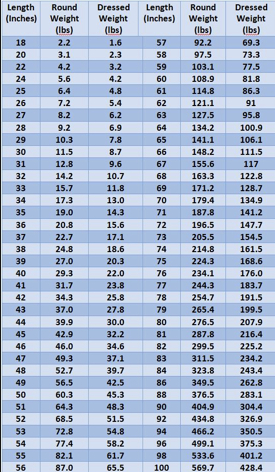
About The Species
Pacific halibut is the largest species of flatfish. It is native to the North Pacific Ocean and it is fished by commercial, recreational, and subsistence fishermen. Huge Pacific halibut, sometimes called “barn doors”, can attain a length of over 8 feet and a width of over 5 feet. Halibut are born swimming like salmon, with eyes on either side of their head. As they grow (by the time they are six months old), one eye migrates to the right side and the young halibut begin swimming sideways, with both eyes on the top of their bodies. Their large size and delectable meat make them a popular and prized target for both sport and commercial fishermen.
Life History
Reproduction and Development
Most male halibut are sexually mature by about 8 years of age, while half of the females are mature by about age 12. Most halibut spawn during the period November through March, at depths of 300 to 1,500 feet. Female halibut release anywhere from a few thousand to several million eggs, depending on the size of the fish.(RELEASE of LARGE BREEDERS + 200 HELPS THE FISHERY)Eggs are fertilized externally by the males. About 15 days later, the eggs hatch and the larvae drift with deep ocean currents. As the larvae mature, they move higher in the water column and ride the surface currents to shallower, more nourishing coastal waters. In the Gulf of Alaska, the eggs and larvae are carried generally westward with the Alaska Coastal Current and may be transported hundreds of miles from the spawning ground.
Halibut larvae start life in an upright position like other fish, with an eye on each side of the head. The left eye moves to the right side of the head when the larvae are about one inch long. At the same time, the coloration on the left side of the body fades. The fish end up with both eyes on the pigmented (olive to dark brown), or right, or upper side of the body, while their underside is white. By the age of 6 months, young halibut settle to the bottom in shallow nearshore areas.
Halibut feed on plankton during their first year of life. Young halibut (1 to 3 years old) feed on euphausiids (small shrimp-like crustaceans) and small fish. As halibut grow, fish make up a larger part of their diet. Larger halibut eat other fish, such as herring, sand lance, capelin, smelt, pollock, sablefish, cod, and rockfish. They also consume octopus, crabs, and clams.
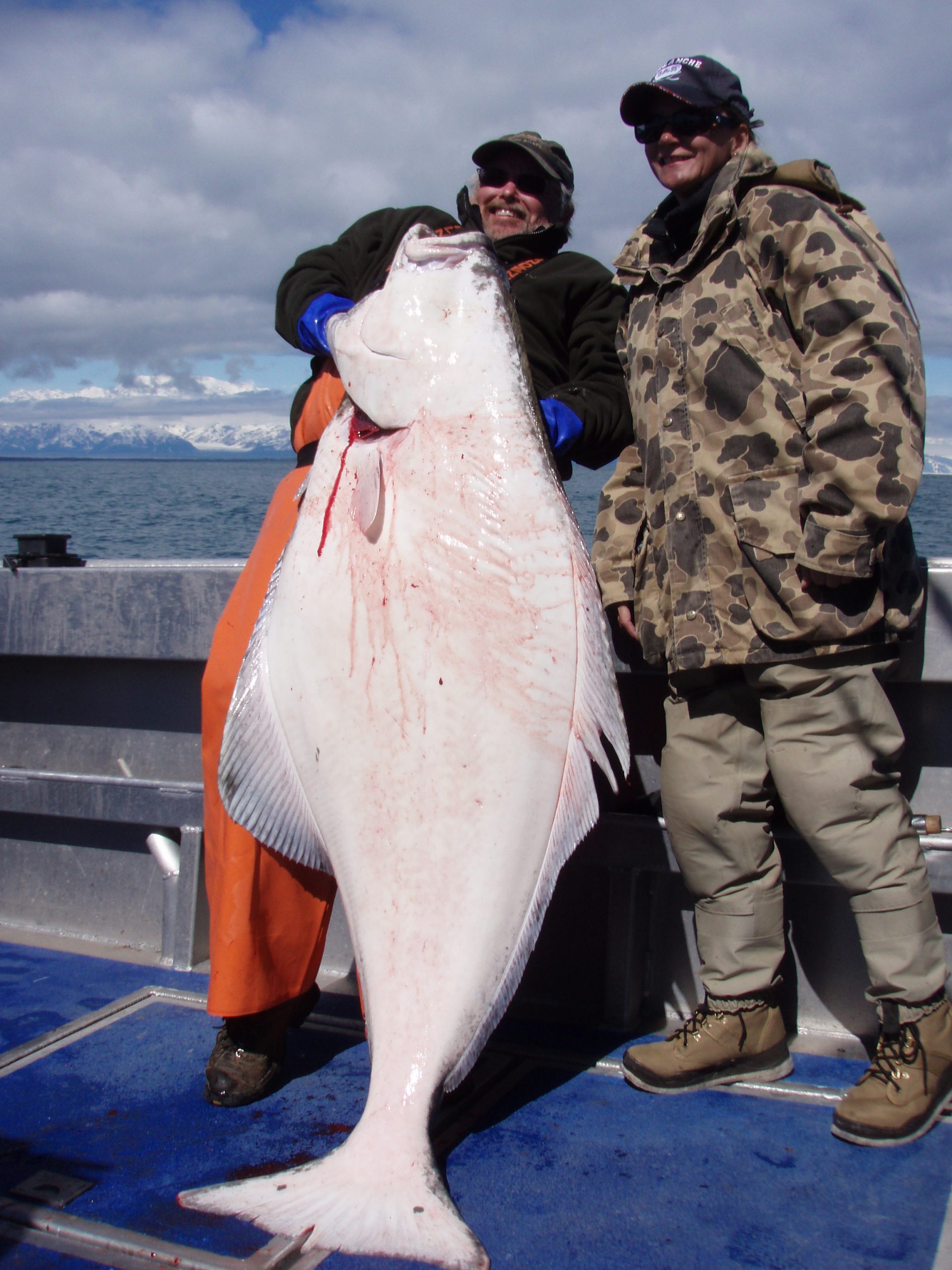
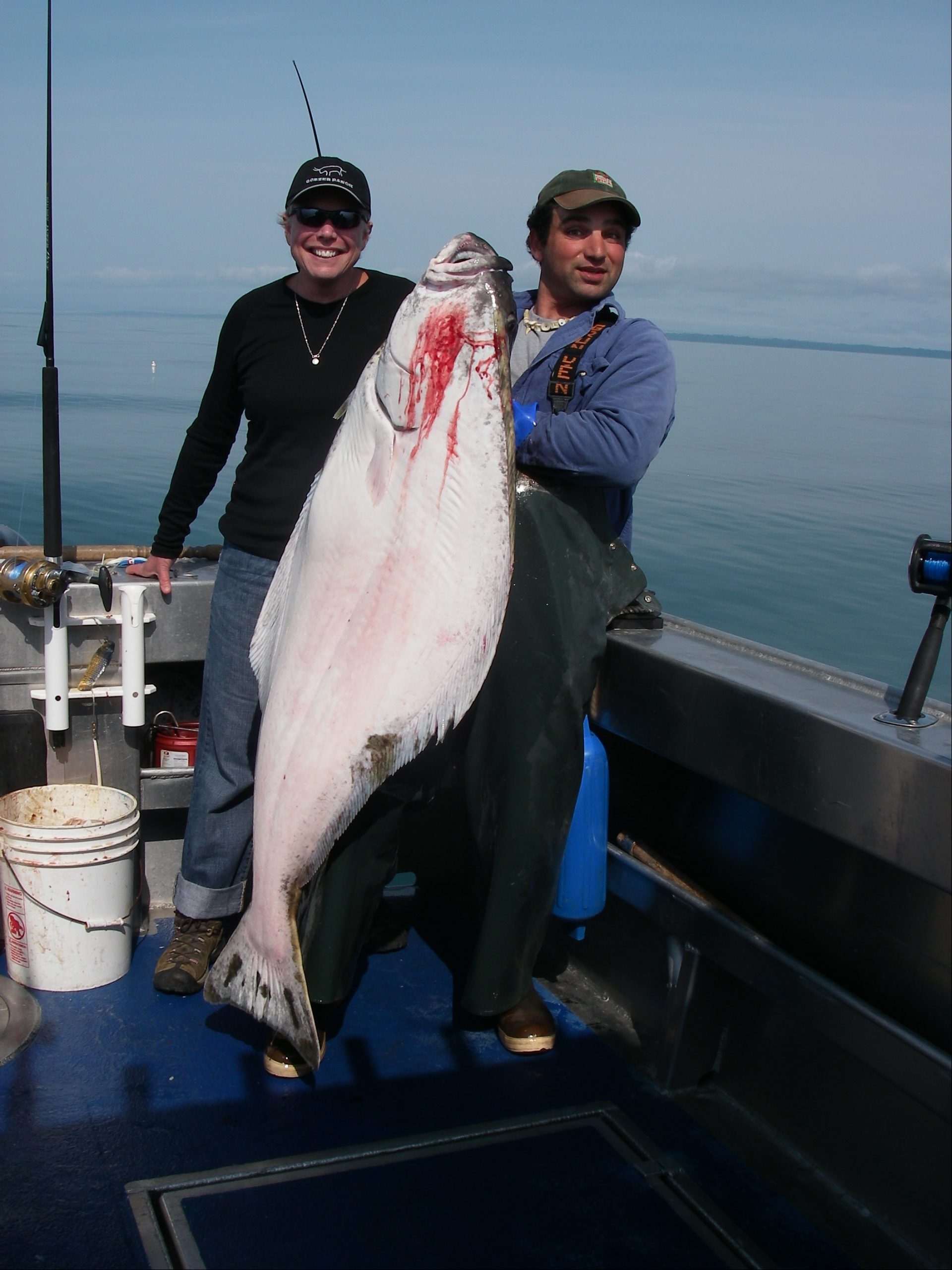
Growth
Female halibut grow faster and reach larger sizes than male halibut. Male halibut rarely reach a length of three feet. Halibut size-at-age has changed over time. For example, the average length and weight of halibut of each age increased from the 1920s to the 1970s, and has decreased since then. By the 2000s, 12-year-old halibut were about three-quarters the length and about one-half the weight they were in the 1980s. Reasons for changes in size-at-age are unknown. The changes are not correlated with changes in ocean temperature. Other possible causes include competition with other species, competition among halibut, climate effects on growth or survival, effects of fishing and size limits, changes in how halibut are aged, or combinations of factors.
Movements
Juvenile and some adult halibut migrate generally eastward and southward, into the Gulf of Alaska coastal current, countering the westward drift of eggs and larvae. Halibut tagged in the Bering Sea have been caught as far south as the coast of Oregon, a migration of over 2,000 miles. Because of the extensive movements of juvenile and adult halibut, the entire eastern Pacific population is treated as a single stock for purposes of assessment. Research is continuing to determine if there are spawning sub-stocks of varying productivity.
Halibut also move seasonally between shallow waters and deep waters. Mature fish move to deeper offshore areas in the fall to spawn, and return to nearshore feeding areas in early summer. It is not yet clear if fish return to the same areas to spawn or feed year after year.


Range and Habitat
Pacific halibut are found on or near the continental shelf through much of the northern Pacific Ocean, from California northward to the Chukchi Sea, and from the Gulf of Anadyr, Russia southward to Hokkaido, Japan. They are typically found near the bottom over a variety of bottom types, and sometimes swim up in the water column to feed. They usually inhabit waters between 20 and 1,000 ft, but have been found at depths up to 3,600 ft. They prefer water temperatures in the range 37-46º F.
How old is my halibut?
It is very difficult to age a halibut by looking at it. Females grow much faster and larger than males, so a 40 inch (102 cm), 30 lb.(13.6 kg) male might be 20 years old, while a female that size could be as young as six-years-old. Growth rates also vary widely between individuals of the same sex. Scientists age halibut by counting the growth rings laid down on the otolith, a bony structure in halibut’s inner ear. The rings on an otolith are counted in the same manner a tree’s rings are counted to determine the age of a tree. Research has determined most halibut landed by a sports fishermen average between five and 15 years.
Is my halibut a male or female?
A halibut’s gonads are found at the bottom of the gut cavity. If the halibut is a female, the ovaries are triangular, hollow sacs that have a light pink tint. The testes in males appear solid and rubbery and are gray.
The Rule of thumb is that if it is over 80 It will generally be a female halibut.
How well do halibut survive catch and release?
Unlike rockfish or cod, halibut do not have an air bladder, or swim bladder, which expands from changes in water pressure, so halibut do not suffer as much when brought to the surface. Research has found that sport-caught halibut handled gently have a 95% survival rate.
How much meat will I get from a 50-lb fish?
You should recover 50% of the total weight of the fish as edible meat. A 50-lb. (22.7 kg) fish will produce @ 25# of beautiful, fillets.
What is a chalky halibut?
Sometimes the meat of a halibut, especially a smaller halibut, will appear opaque white instead of translucent when it is filleted. While this chalky meat may taste slightly drier than opaque meat, there is nothing wrong with the meat. Chalkiness is caused by a build-up of lactic acid in the flesh when the halibut over-exerts itself while it is fighting as the fisherman hauls it to the surface. Warmer water temperatures also seem to be a factor in causing increased lactic acid in the fish. In Alaska, 5% of all halibut caught are chalky.
Great News For Yakutat Halibut Fishing In 2021
The commercial sector is in charge of monitoring the biomass of Halibut in the Pacific. The info from Ian Stewart (lead scientist for the International Pacific Halibut Commission) was Quoted from: Alaska fish radio...referencing the bio mass of halibut as IT looks...

